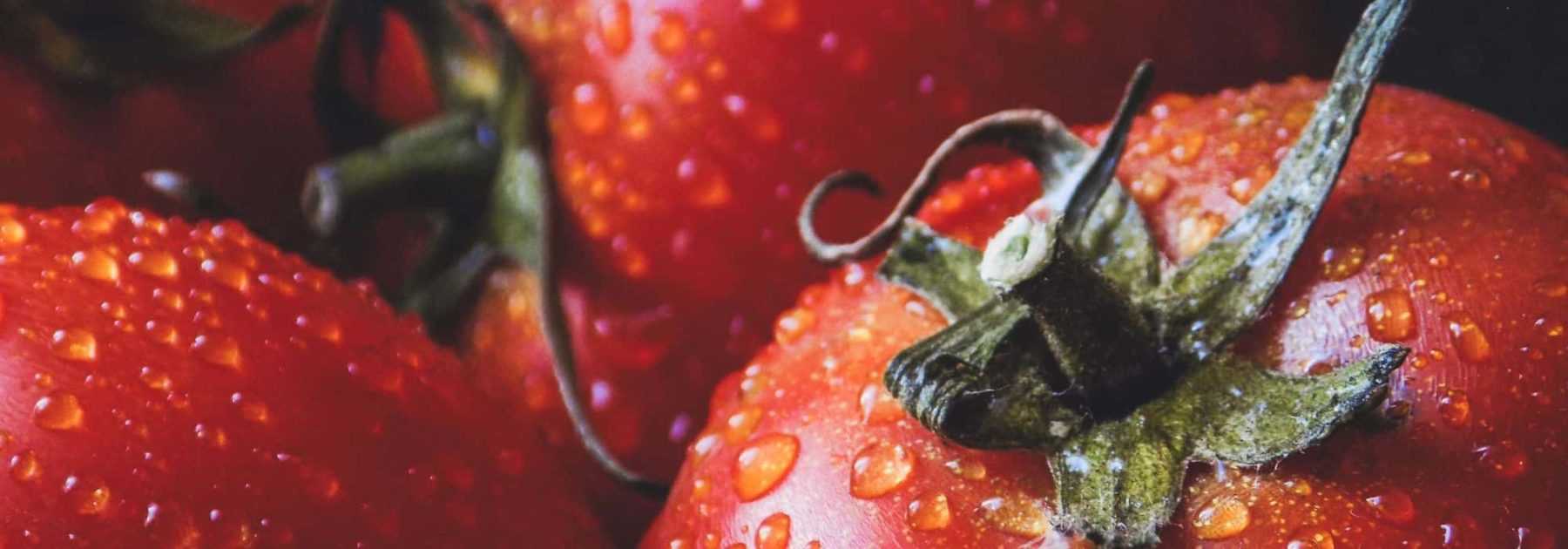
Tomatoes: sowing, planting, care and harvest
Contents
The tomato in a nutshell
- A vegetable plant from the Solanaceae family, the tomato originates from northwestern South America
- This highly popular plant in all vegetable gardens is a climbing perennial cultivated as an annual in our climate
- Depending on the variety, tomatoes have either determinate or indeterminate habit
- Easy to grow, tomatoes come in thousands of varieties with different shapes, sizes and colours
- Its warm sowing, planting and maintenance are easily accessible to everyone.
Our expert's word
If there’s one vegetable that sparks debates, questions, and controversies, it’s undoubtedly the tomato (Solanum lycopersicum). A staple in every vegetable garden, it offers excellent yields in small spaces while being easy to grow. Indeed, from seed germination (relatively straightforward when started in warmth) to harvest, cultivation presents few challenges – except perhaps its vulnerability to fungal diseases like blight.
With an incredible diversity of varieties, continually enriched by new cultivars and hybrids, the tomato is a hungry plant requiring rich, deeply amended soil and a very sunny position. This quintessential sun-loving vegetable may (or may not!) need staking, pruning, or side-shooting.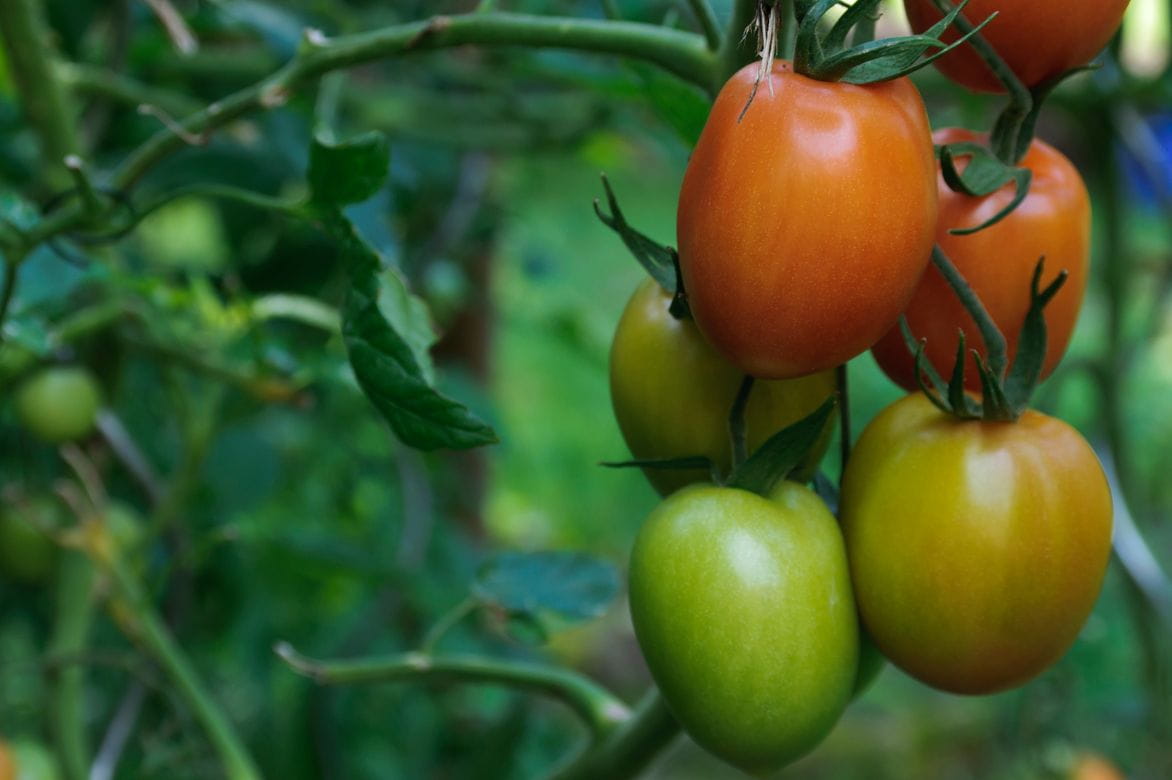
The fruits can be eaten raw or cooked, featuring in countless recipes. They form a cornerstone of Mediterranean cuisine, being low in calories yet rich in potassium and vitamins.
Description and botany
Botanical data
- Latin name Solanum lycopersicum
- Family Solanaceae
- Common name Tomato
- Flowering Spring and summer
- Height up to 2.50 m
- Exposure Full sun
- Soil type rich and deep
- Hardiness tender
Today, it’s quite hard to imagine a vegetable garden without tomatoes. Yet this vegetable wasn’t always considered as such. Indeed, Solanum lycopersicum, a plant species from the Solanaceae family, is believed to have been discovered in 1519 by Hernan Cortés, the Spanish navigator, explorer and conquistador who went to seek his fortune in the Americas. It was there, in an Aztec market in the province of Tenochtitlan in what is now Mexico, that he first saw this red fruit. A few years later, the tomato arrived in Spain, then in Italy via the port of Naples. But due to its kinship with the toxic deadly nightshade, scientists of the time were only interested in its medicinal properties.
It wasn’t until 1784 that the Andrieux-Vilmorin catalogue classified the tomato as a vegetable. From then on, it enjoyed renewed popularity and entered gardens, mainly in southern regions. Then, after the French Revolution, with the arrival of Provençals in Paris, the tomato made its way into the big city. It continued to develop to become one of the most consumed fruit-vegetables in the world. It is also the subject of multiple scientific and genetic research projects and is continually enriched with new hybrids and cultivars.
The name “tomato” comes from the term “tomalt” in the Aztec dialect of Mexico. For a long time, tomatoes were called love apples or golden apples.
The tomato is a tender herbaceous plant, perennial in warm climates, but grown as an annual in our latitudes. It is naturally a plant with indeterminate growth, meaning it has unlimited growth if the terminal buds are not pruned. However, there are also plants with determinate growth. At the beginning of its growth, the tomato has an upright, well-branched habit, but as it develops, it tends to sprawl and lie down. It also has a very powerful root system that can extend up to 1 m underground.
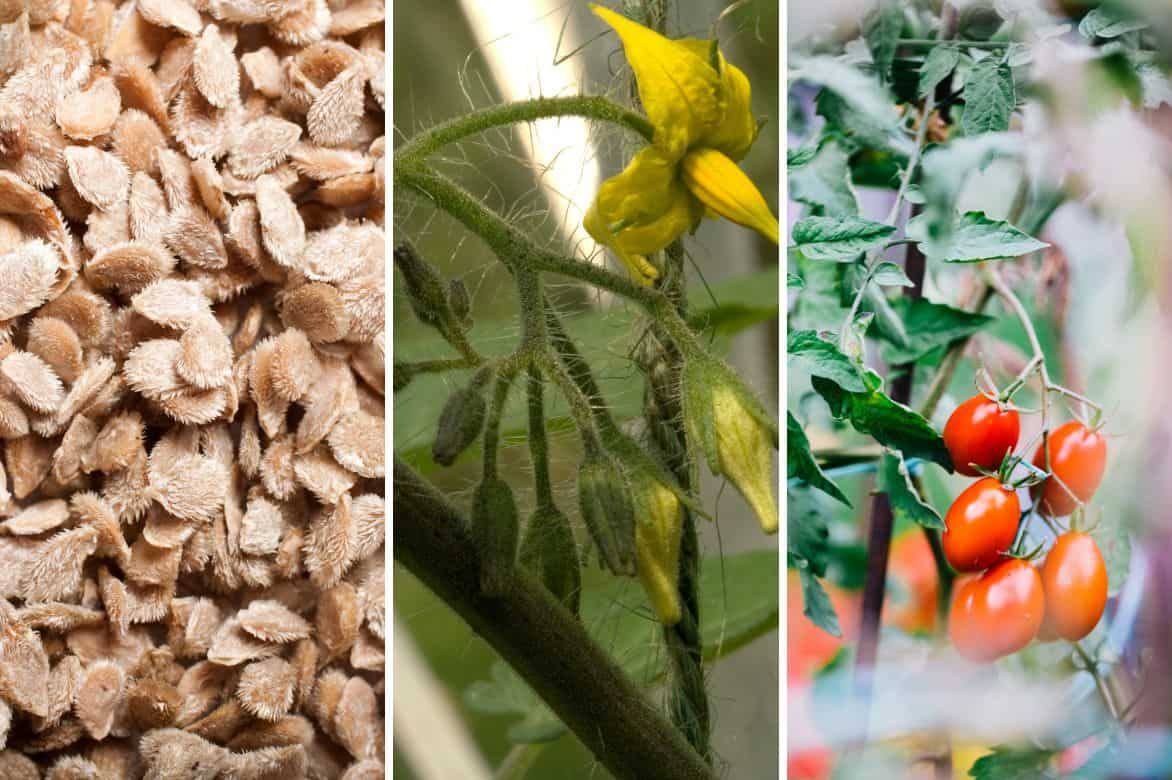
Tomato leaves are green, alternate, odd-pinnate, composed of 5 to 7 leaflets, and deeply lobed and dentate. They are covered with single hairs and glandulous hairs containing an essential oil with a distinctive, typical tomato scent. The angular stems are also pubescent.
Tomatoes flower between spring and summer. As a hermaphroditic plant, the tomato bears flowers with both sexual organs, namely the pistil and stamens. They are fertilised simply by pollen falling onto the stigmas through wind action (which is why tomato plants grown in greenhouses sometimes need shaking!). The axillary flowers have 5 bright yellow petals and 5 green sepals.
They give rise to berries containing numerous tiny seeds. They come in various shapes, as they can be round, elongated, horned, ribbed, fleshy, heart-shaped, striped… or even clustered. Our vegetable gardens also feature cherry tomatoes and cocktail tomatoes.
The flesh of tomatoes can be more or less firm, crunchy, juicy, melting or thick, with flavours ranging from tangy to acidic or sweet. Finally, while tomatoes are mainly red, there are also yellow varieties like ‘Cherry Yellow‘, orange varieties such as the American ‘Ananas‘, white varieties (‘White Wonder‘), indigo blue (‘Bosque blue‘), or even green (‘Green Zebra‘).
Read also
Planting tomatoes in plug plantsThe different varieties of tomatoes

Tomato Gardeners Delight
- Height at maturity 2,10 m
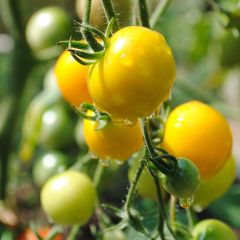
Tomato Cherry Yellow
- Height at maturity 1,80 m
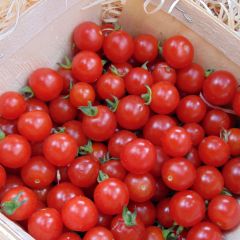
Tomato Sweetbaby F1 Plants
- Flowering time June to September
- Height at maturity 1,50 m
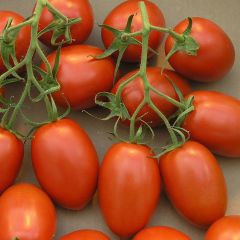
Tomato Roma Plants
- Height at maturity 1,20 m
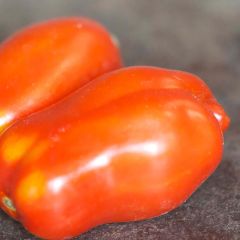
Tomato San Marzano
- Height at maturity 1,20 m
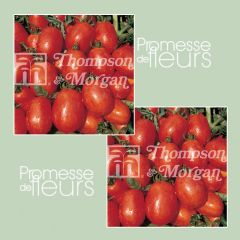
Tomato Rio Grande
- Height at maturity 2,40 m
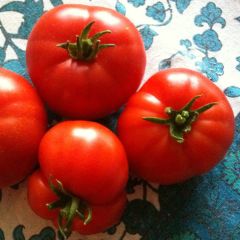
Tomato Marmande Seedlings
- Height at maturity 2 m
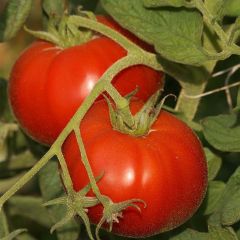
Tomato Saint-Pierre Plants
- Flowering time July to October
- Height at maturity 1,50 m
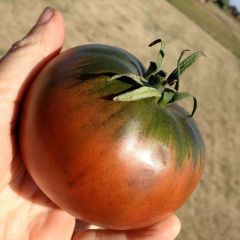
Tomato Cherokee Purple
- Flowering time July to September
- Height at maturity 2 m
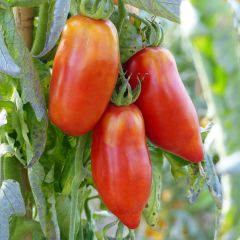
Tomato Cornue des Andes - Andine Cornue
- Height at maturity 1,50 m
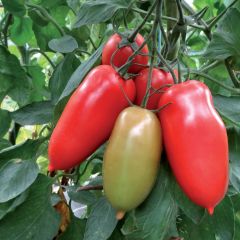
Tomato Gagliardo F1 Grafted Plants
- Height at maturity 1,50 m
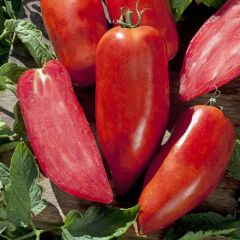
Tomato Bellandine F1 Plants
- Flowering time July to October
- Height at maturity 1,30 m
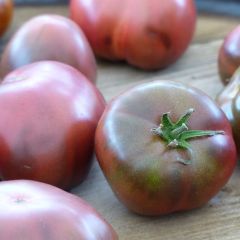
Tomato Crimean Black plants
- Height at maturity 2 m
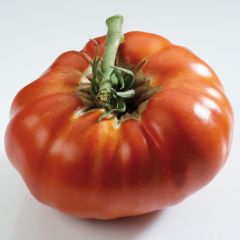
Tomato Red Russian Seedlings
- Height at maturity 1,80 m
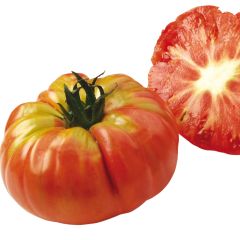
Tomato Scarlet Pumpkin
- Height at maturity 2 m
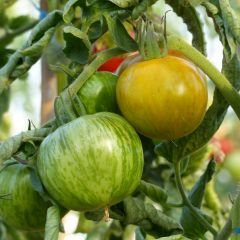
Tomato Green Zebra Tomato in seedlings
- Height at maturity 1,80 m
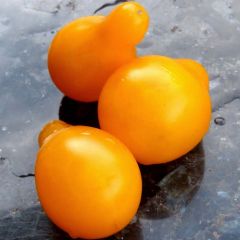
Tomato Yellow Pear Plants
- Flowering time June to September
- Height at maturity 2 m
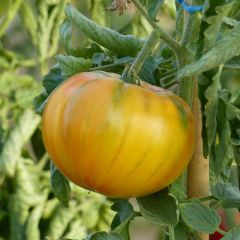
Tomato Ananas Pineapple Plants
- Height at maturity 1,20 m
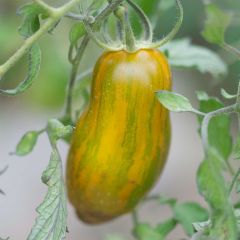
Green Sausage Organic Tomato - Ferme de Sainte Marthe seeds
- Height at maturity 50 cm
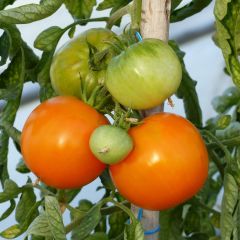
Tomato Orange Queen
- Height at maturity 1,20 m
Discover other Tomatoes
View all →Available in 1 sizes
Available in 1 sizes
Available in 1 sizes
Available in 2 sizes
Available in 2 sizes
Available in 1 sizes
Available in 1 sizes
Available in 1 sizes
Available in 1 sizes
Available in 1 sizes
Sowing and planting tomatoes
Where and When to Sow Tomatoes?
Whether you’ve saved your own seeds or purchased them in packets, tomato sowing should be done in warmth, at a temperature between 16 and 20°C. The room where sowing takes place must also be well-lit to avoid leggy growth, meaning excessively rapid vertical growth. A conservatory is the ideal place for sowing tomatoes.
The timing largely depends on your region. Generally, allow two months between sowing and transplanting outdoors. North of the Loire, tomatoes are planted around mid-May, once all risk of frost has passed—typically after the Ice Saints (11th, 12th, and 13th May). South of the Loire, however, tomatoes can be planted as early as mid-April. Therefore, sowing takes place from mid-February to mid-March, depending on the region.
Don’t hesitate to grow multiple varieties for early or late harvests, in all colours and shapes.
How to Sow Tomatoes?
Tomato sowing technique:
- Fill trays, shallow containers, or seed trays (10 cm deep) with slightly moist seed compost
- Create very shallow furrows
- Place tomato seeds every 2 cm
- Cover with a thin layer of compost
- Water with a spray bottle using room-temperature rainwater
- Cover containers with cling film or a transparent lid to speed up germination (remember to open regularly for ventilation).
Until germination (usually within a week), it’s essential to keep the compost moist (but not waterlogged) by watering with a spray bottle.
Sowing can also be done directly in buckets filled with seed compost, planting three seeds per bucket.
In any case, remember to label your sowings if growing multiple varieties.
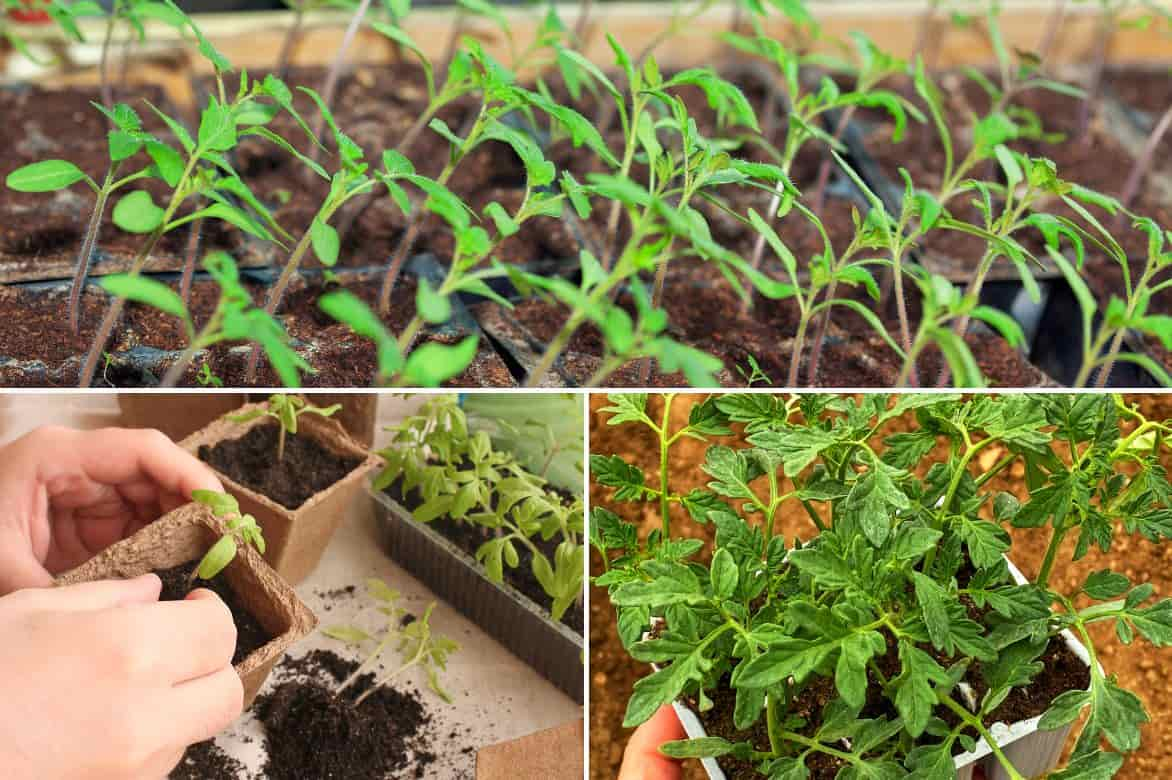
From germination in trays to planting young plants outdoors
Transplanting into buckets:
When seedlings have four leaves (excluding the two cotyledons), transplant the strongest into buckets filled with good compost or potting mix to strengthen their root system.
- Lift tomato seedlings carefully with a fork
- Make a hole in each bucket and transplant seedlings up to the cotyledons
- Gently firm with fingertips and water lightly with a small watering can with a beak, avoiding the foliage.
Keep the buckets in warmth until planting outdoors. On sunny days, place them in partial shade to acclimatise young tomato plants to outdoor conditions.
Further reading:
- Sowing Tomatoes and Transplanting Them
- Sowing Tomatoes in Upside-Down Bottles
- When and How to Transplant Tomatoes in the Garden?
Planting Tomatoes: Where, When, and How?
Once frost risks have passed, from mid-April to mid-May depending on the region, tomato plants can be transplanted into the garden. They should have 5 to 7 healthy leaves. If you haven’t sown your own, this is also the time to buy young plants in buckets.
As a sun-loving vegetable, tomatoes need a very sunny spot to ripen. They require light, well-drained, humus-bearing soil, enriched beforehand with compost or well-rotted manure.
- Loosen and refine the soil with a cultivator
- Dig holes every 40–50 cm, at least 20–30 cm deep and wide, in rows spaced 70 cm apart. Alternatively, stagger plants in a zigzag pattern
- Place supports next to each hole
- Add a handful of chopped fresh nettle leaves to each hole
- Bury the tomato plant up to its first leaves, possibly slightly angled towards the support. The buried stem will quickly produce new roots
- Backfill, firm gently, and create a small watering basin
- Water at the base and mulch.
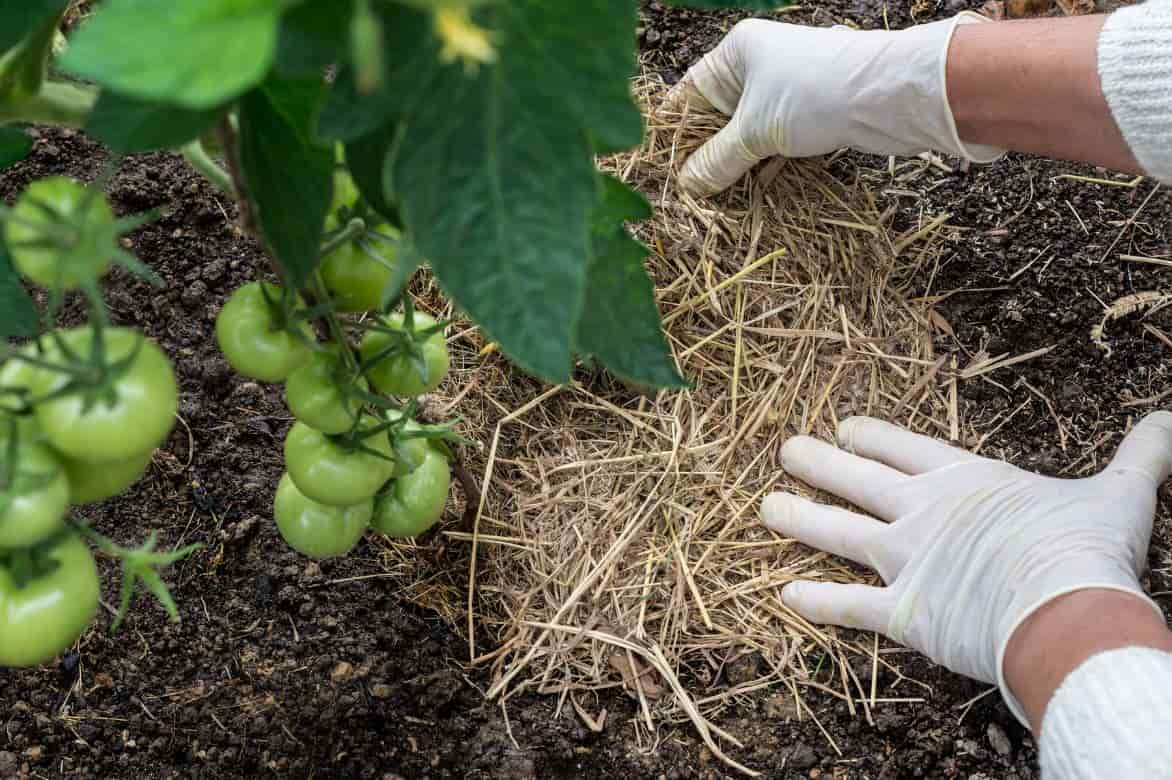
You can also grow tomatoes in pots on a balcony, in a cage, or simply let them grow freely.
Tomato Care
Once planted, your tomatoes will need basic care:
- If not already done, apply a good mulch around the base of your tomatoes using straw and dried grass clippings. The mulch reduces water evaporation, allowing you to space out watering while preventing weed growth
- Water generously once a week, always at the base and without wetting the foliage to minimise the risk of fungal diseases
- Remove suckers (the small side shoots) at the base of the tomatoes as they develop, as they unnecessarily drain the plant’s energy
- During growth, but without excess, you can apply a special tomato fertiliser or nettle liquid fertiliser, which nourishes the tomatoes and enriches the soil.
To go further:
Pruning tomatoes
Pruning helps produce larger tomatoes. However, it is not obligatory. If you choose not to prune your tomatoes, you’ll get more tomatoes, but they’ll be smaller. The choice is yours! Simply remove the suckers, meaning the lowest side shoots, either by pinching them off with your fingers for the smaller ones or cutting them with a clean, disinfected knife or secateurs for the larger ones.
Alternatively, you can also top your tomato plant once it has at least 3 flower clusters. Just cut the main stem 2 leaves above a cluster. Repeat this process whenever possible.
To learn more:
Tomato Diseases and parasitic Pests
Although tomato cultivation is renowned for its simplicity, it often faces the plant’s susceptibility to various fungal diseases, particularly the dreaded blight, as well as frequent pest infestations. To address these issues, adopting appropriate cultivation practices proves crucial. It is advisable to avoid watering the leaf, space out tomato young plants to ensure good air circulation, favour greenhouse cultivation or set up protective coverings, and not overlook the importance of crop rotation to maintain the health of your young plants.
The appearance of blight is characterised by brown, oily-looking spots on the leaf, which then spread to the stems and fruits. In case of an attack, using Bordeaux mixture or a horsetail decoction proves effective in treating affected young plants. These measures, combined with constant vigilance and the application of good cultivation practices, greatly contribute to the success of your tomato crop by minimising the risks of diseases and pest attacks.
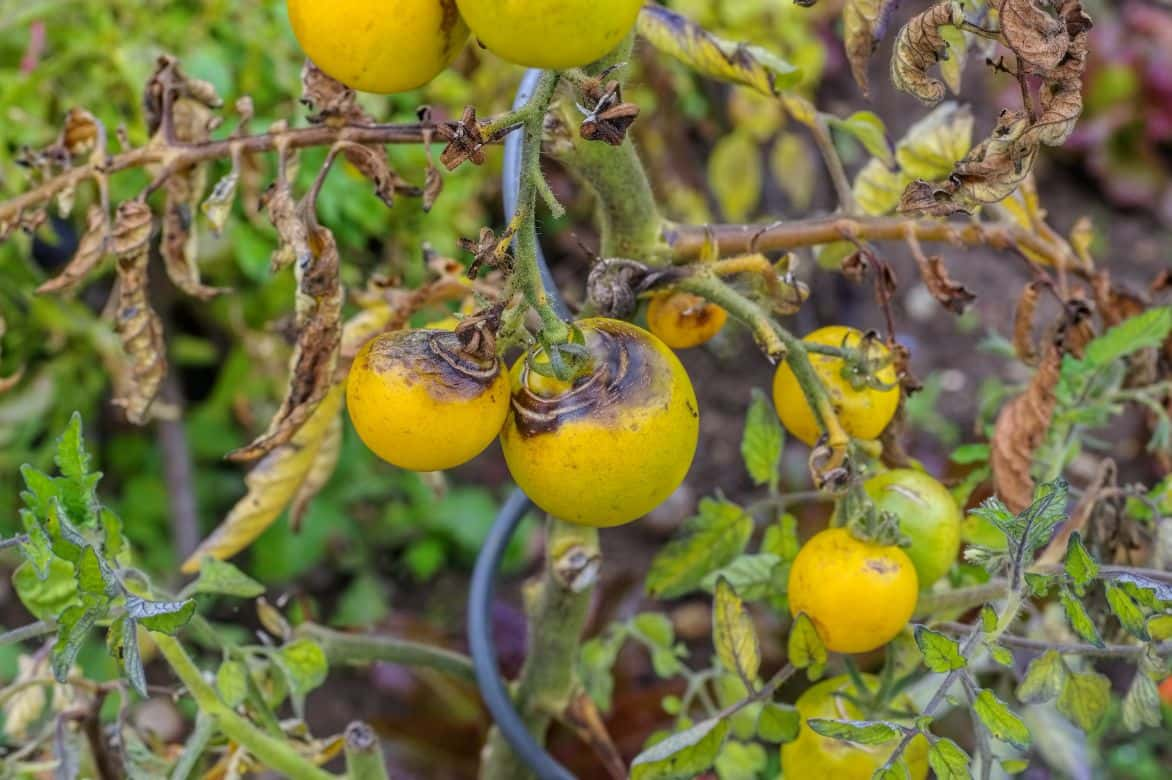
Tomatoes affected by blight
Besides blight, tomatoes can suffer from various other afflictions such as alternaria, known as black rot, fusarium wilt, verticillium wilt, or even blossom end rot and leaf roll. These diseases can significantly affect the health and yield of tomato young plants, thus requiring appropriate attention and care to prevent and combat them.
Regarding pests, tomatoes are not spared from attacks by the tomato fruitworm, a caterpillar that feeds on its leaves, the red spider mite which targets the leaf in dry and hot conditions, or root-knot nematodes which disrupt the absorption of water and nutrients by the root. These pests can cause significant damage to tomato young plants, directly impacting their development and productivity.
For effective management of diseases and pests threatening tomato cultivation, it is essential to stay informed and prepare to intervene appropriately. With this in mind, I highly recommend reading Ingrid B.’s article entitled “Tomato: Blight, Other Diseases and Pests“, which provides a comprehensive overview of the symptoms, preventive measures, and available treatments for these problems. This article is a valuable resource for all gardeners seeking to protect their crops and ensure the health of their tomatoes.
→ Also read our feature on the tomato fruitworm.
Propagating tomatoes
Tomatoes can be propagated by sowing. You can harvest your own tomato seeds, dry them in the shade and store them in a paper bag in a cool, airy place. However, it is essential to only harvest seeds from non-hybrid tomatoes, i.e., non-F1 varieties. Indeed, F1 hybrid seeds are not reproducible.
Tomatoes can also be propagated by cuttings from pinched side shoots. Once these side shoots have been removed, simply trim the lower leaves and place them in a glass of water or directly into potting compost. After a week or two, roots will have formed, and the young plants can then be planted out in the garden.
Good companion plants for tomatoes
As a member of the Solanaceae family, tomatoes do not make good companions with potatoes, aubergines, or peppers, which also belong to the same family, nor with fennel, beetroot, or sweetcorn.
On the other hand, they thrive alongside vegetables such as asparagus, leeks, carrots, peas, as well as lettuces, spinach, and radishes, which will benefit from their shade. The trio of onions, garlic, and shallots is particularly beneficial in protecting tomatoes from fungal diseases.
Don’t hesitate to plant aromatic herbs near your tomatoes, such as basil, parsley, mint, chives, or sage, which help deter pests.
Finally, plant French marigolds (Tagetes) near your young tomato plants—their strong scent repels the main tomato pests—or nasturtiums, which attract aphids away from your crops.
→ Learn more with the 10 best companion plants for tomatoes.
The harvest and storage of tomatoes
Tomatoes are ready for harvest when they are fully red (or yellow, or green…), usually from July to October, or even as early as June for the earliest varieties. Simply twist the tomato gently to detach it from the young plant. To encourage ripening of the last tomatoes towards the end of summer, remove the leaves that might shade them from the sun’s rays.
In autumn, if you still have some green tomatoes left, pick them and let them finish ripening indoors in a conservatory, or wrapped in newspaper. You can also use them to make pesto or green tomato jam.
Tomatoes keep for 4 to 5 days in the fridge’s vegetable drawer. Alternatively, you can preserve them by sterilising for canning, sun-drying them and storing them in olive oil, or freezing them—either raw or blanched.
The Benefits of Tomatoes
The tomato is a vegetable-fruit that is very low in calories but rich in fibre, potassium and vitamins A, C and E. They also contain a good dose of antioxidants. However, they are very acidic and may cause gastric problems.
- Read our advice sheet: F1 Tomatoes – What exactly are they?
- Discover our selection of the best tomatoes for cooking
- F1 Tomatoes: 9 top varieties for tasty harvests
- Discover 7 naturally blight-resistant tomato varieties
- How to harvest and store your tomato seeds?
- Our advice sheet: My tomatoes look ugly – causes and natural solutions.
Frequently asked questions
-
Is the tomato a fruit or a vegetable?
From a botanical perspective, the tomato is a fruit, as it results from the transformation of a flower. Moreover, the tomato contains the seeds. In contrast, a vegetable comes from leaves, stems, tubercles, roots... However, the tomato is considered a vegetable in culinary terms. This is why it is commonly referred to as a fruit-vegetable, a term that strikes a compromise.
-
What is an F1 tomato?
This is a tomato that has undergone hybridization, meaning it was born from the cross-breeding between two different tomato varieties. This hybridization serves various purposes such as producing larger tomatoes, sweeter juice, higher yields, and greater disease resistance. It's important to note that a hybridized tomato is, on one hand, not genetically modified, and on the other hand, it is non-reproducible.
- Subscribe!
- Contents


































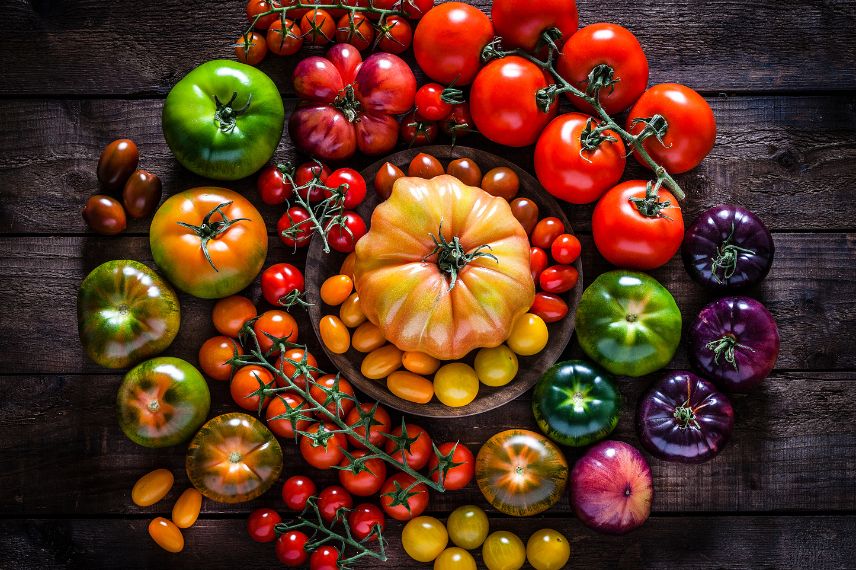
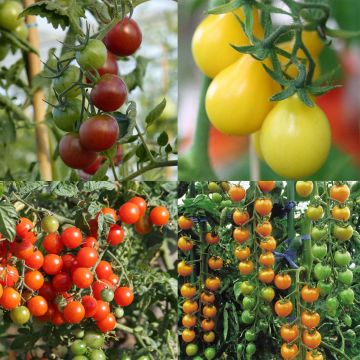
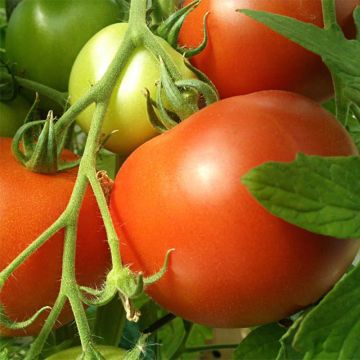
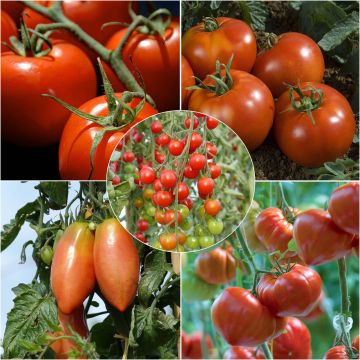
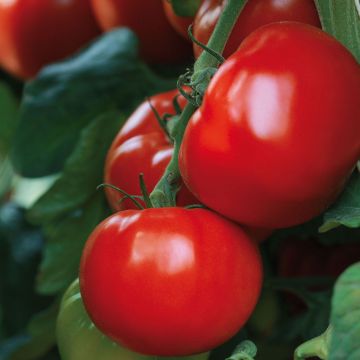
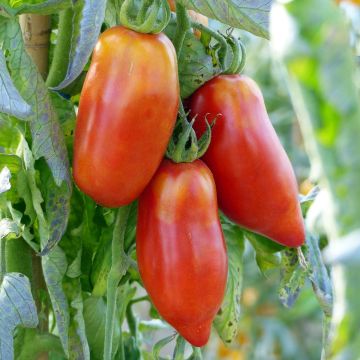
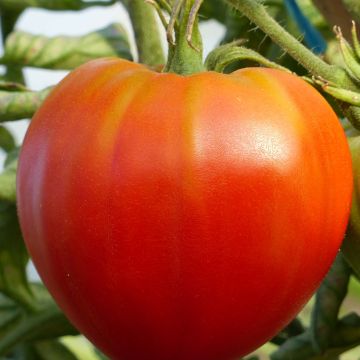
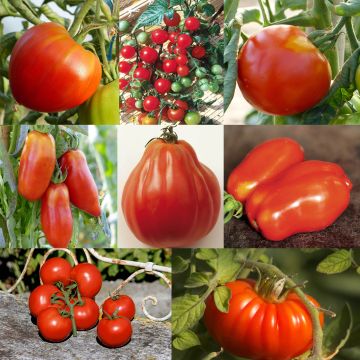
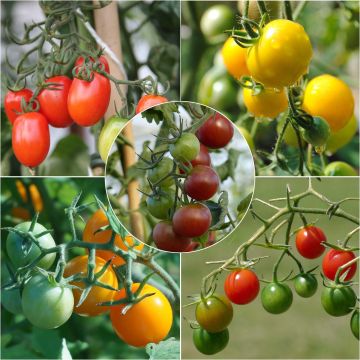
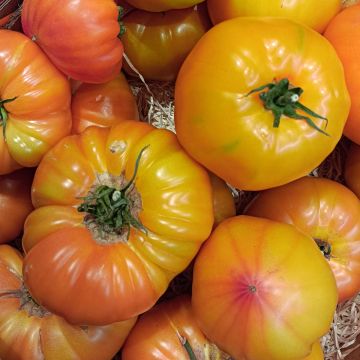
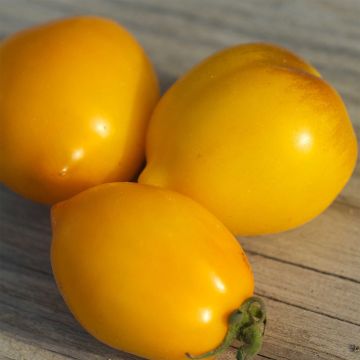
Comments